

UP.01.AR_7




This work is my master's thesis in Urban Studies, which explores, from a psychological perspective, the sense of place in Melilla as experienced by the different cultures of its inhabitants.
This thesis examines the concept of belonging in Melilla through a framework that integrates the distribution of power structures within this North African enclave, whose sovereignty remains contested. The enclave’s history as a colonial outpost during the 1920s and 1930s has contributed to its extensive militarization, which coexists with an emerging narrative of "multiculturalism" intended to characterize the city. By employing a series of cartographies and diagrams, the study analyzes various groups of belonging and explores their underlying power dynamics from a psychoanalytical perspective.
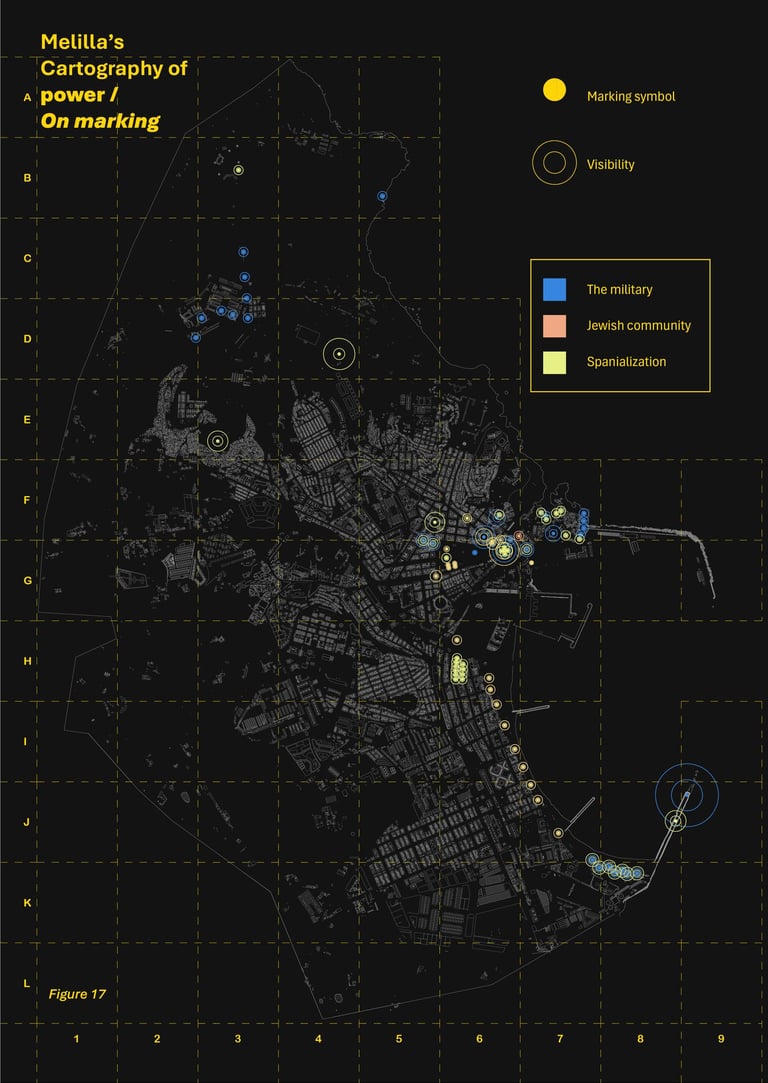





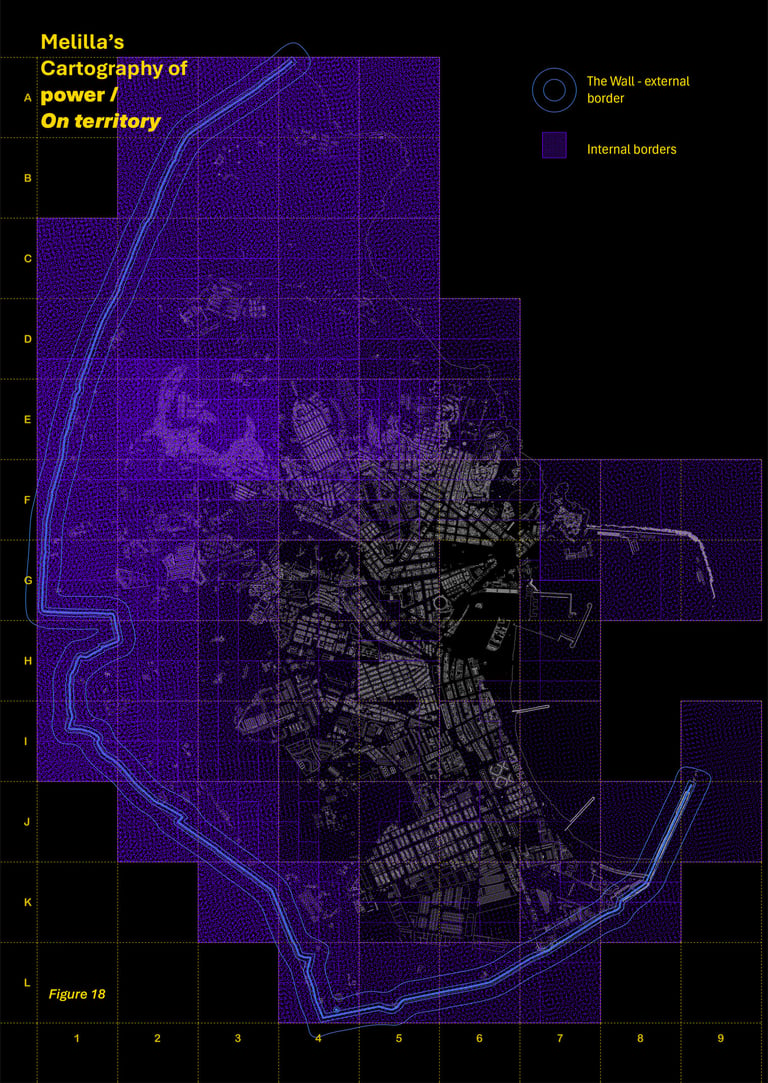



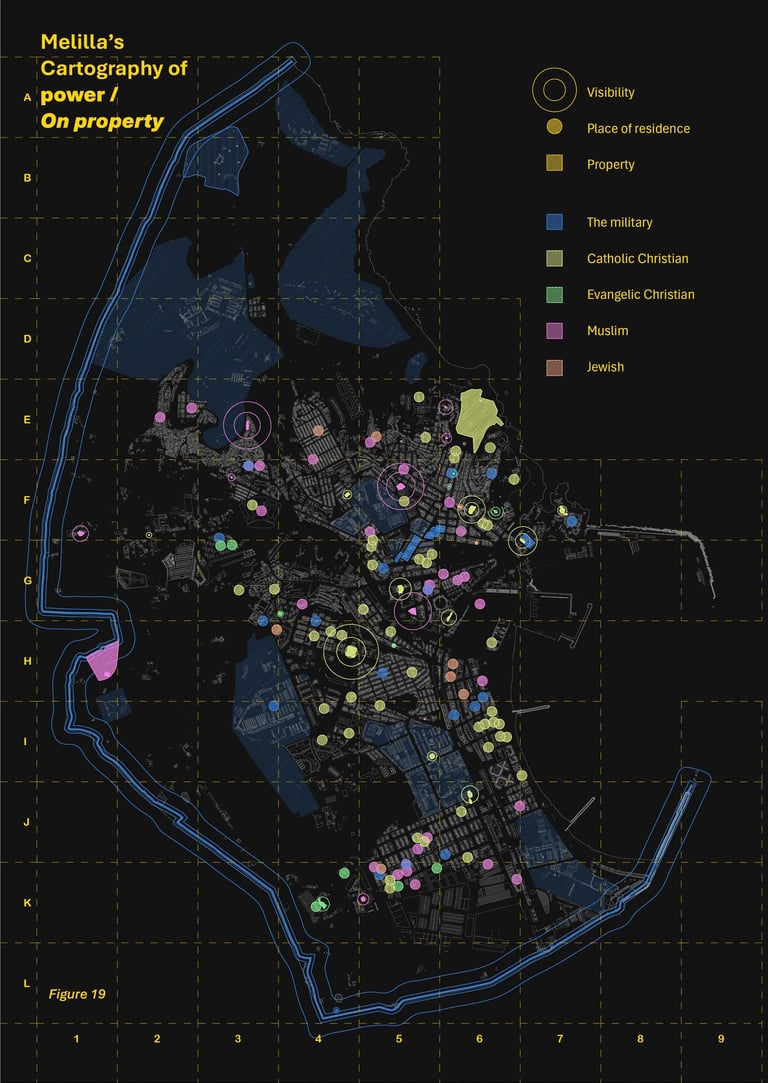







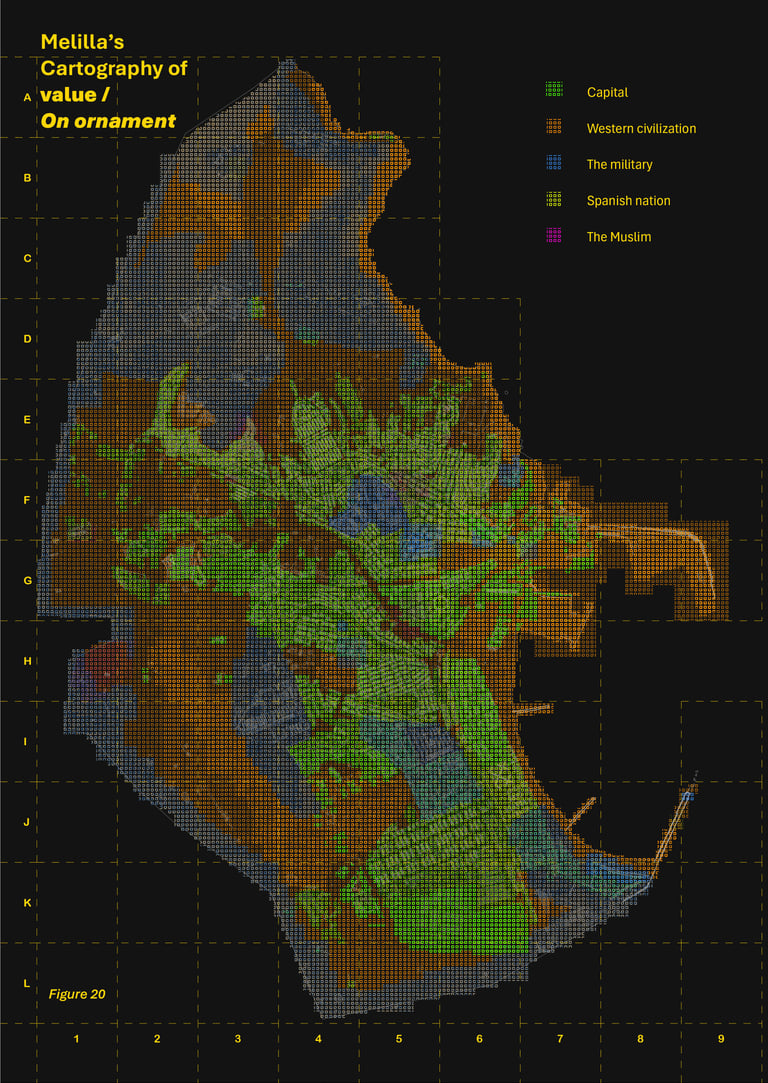



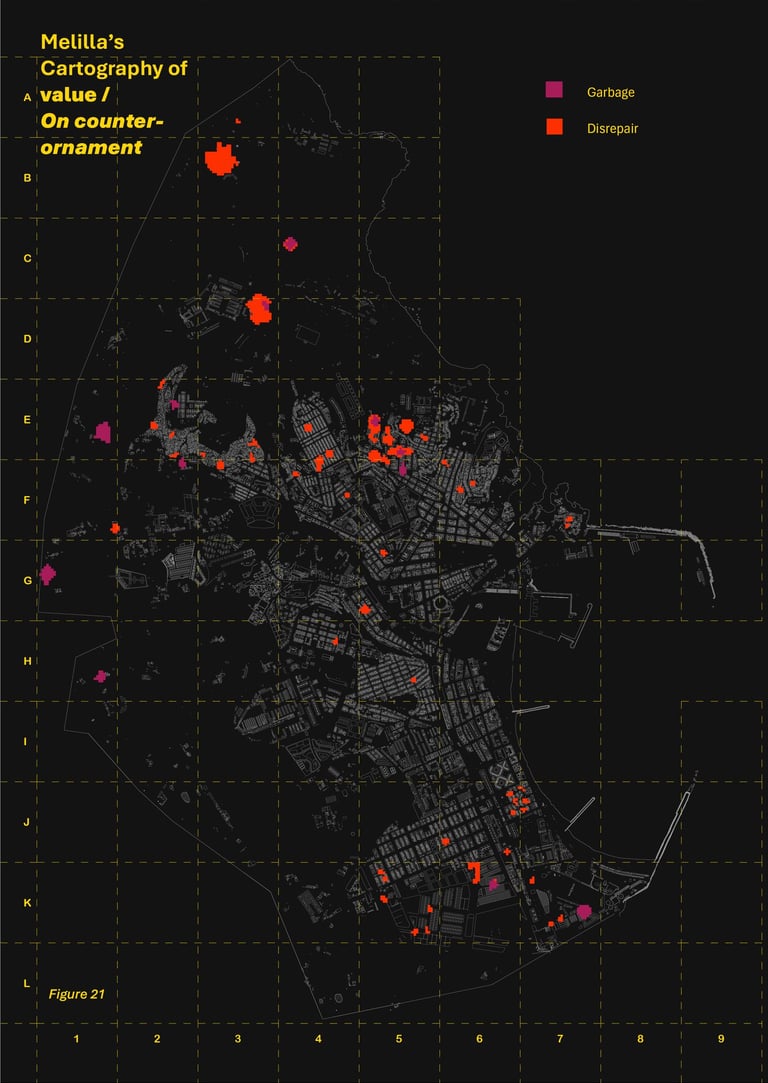







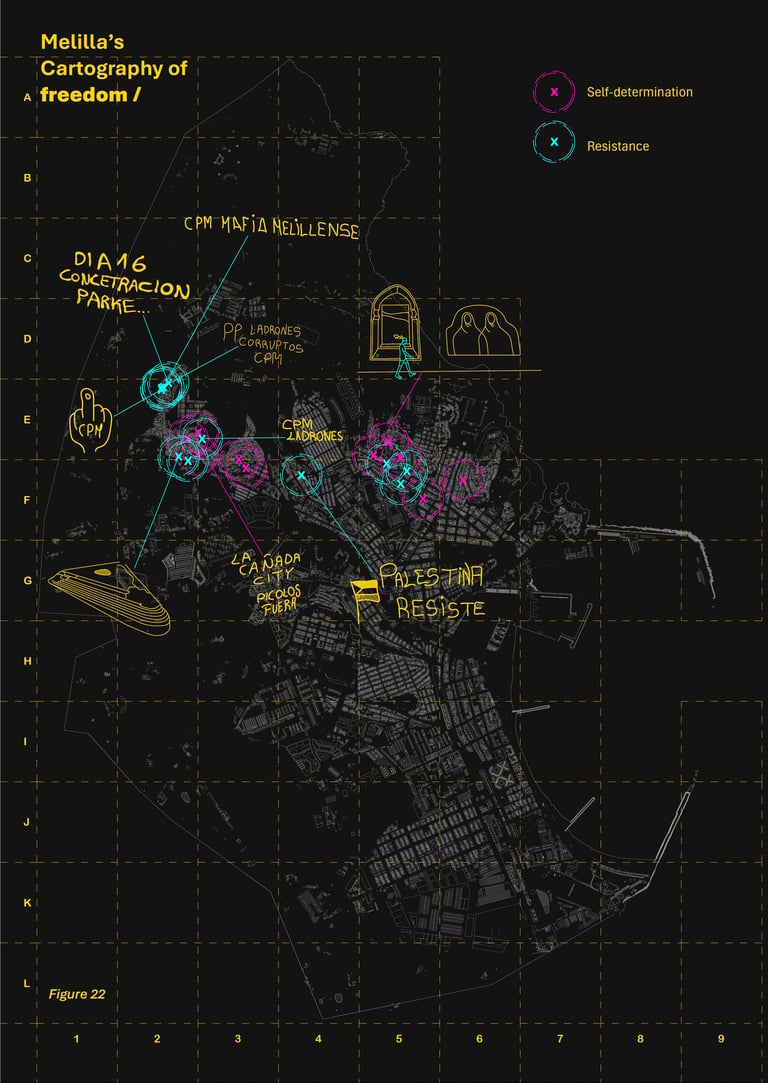



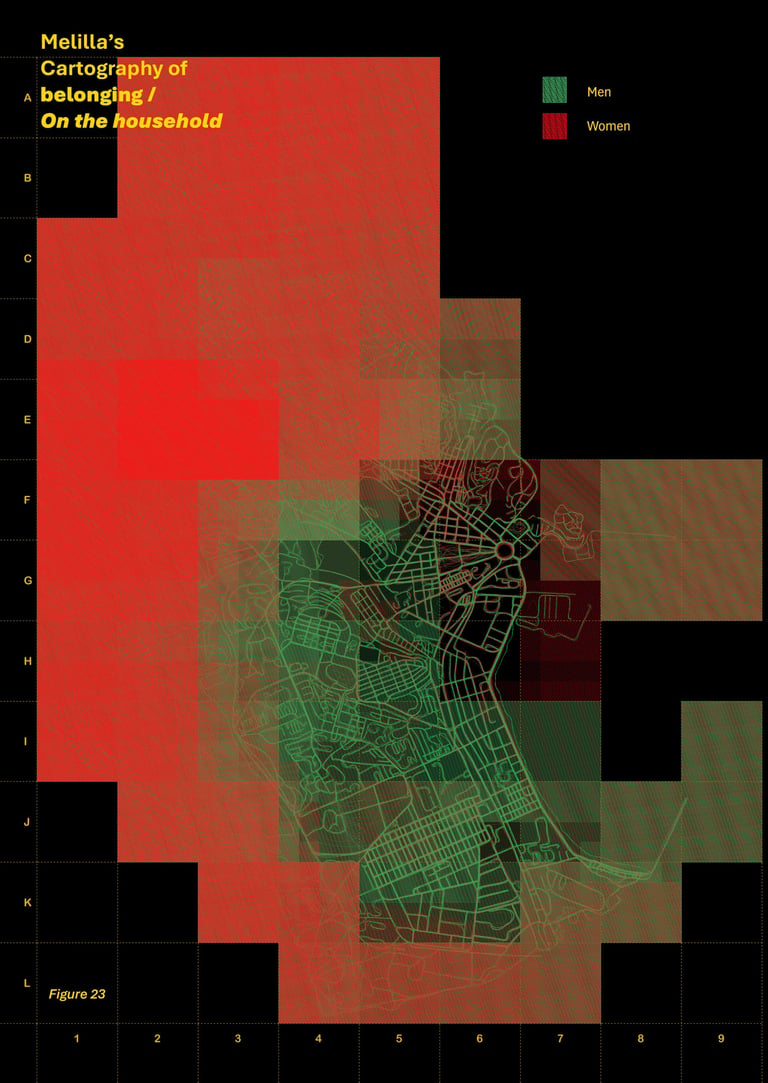











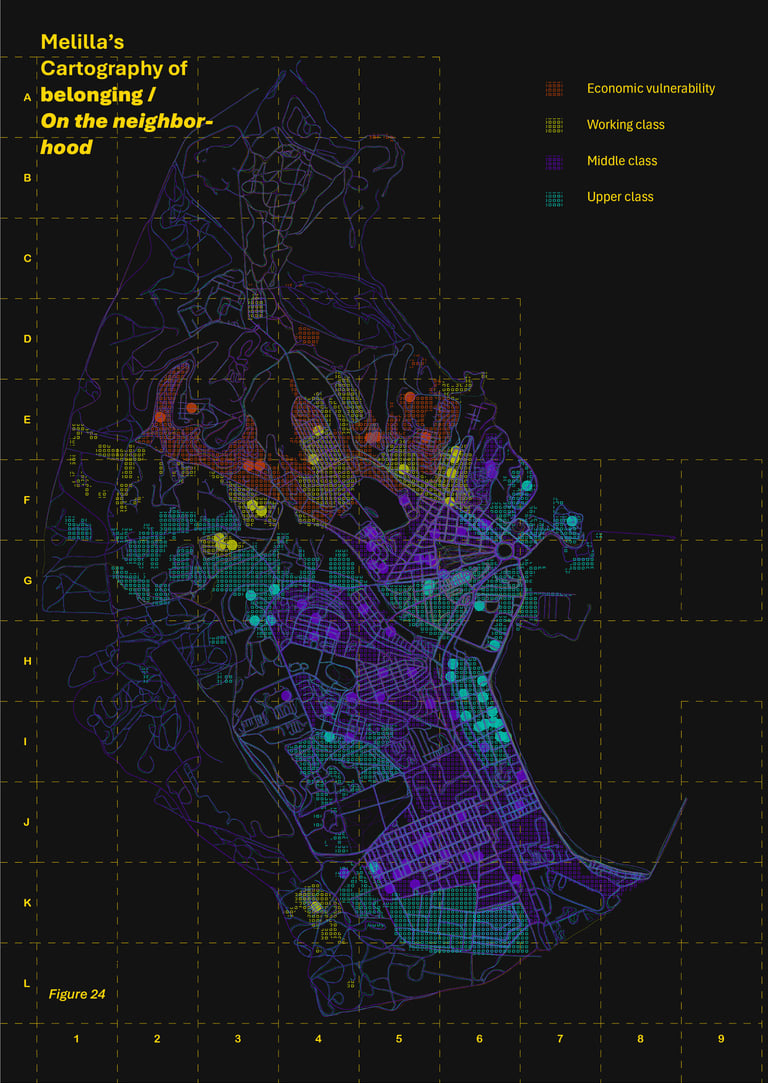

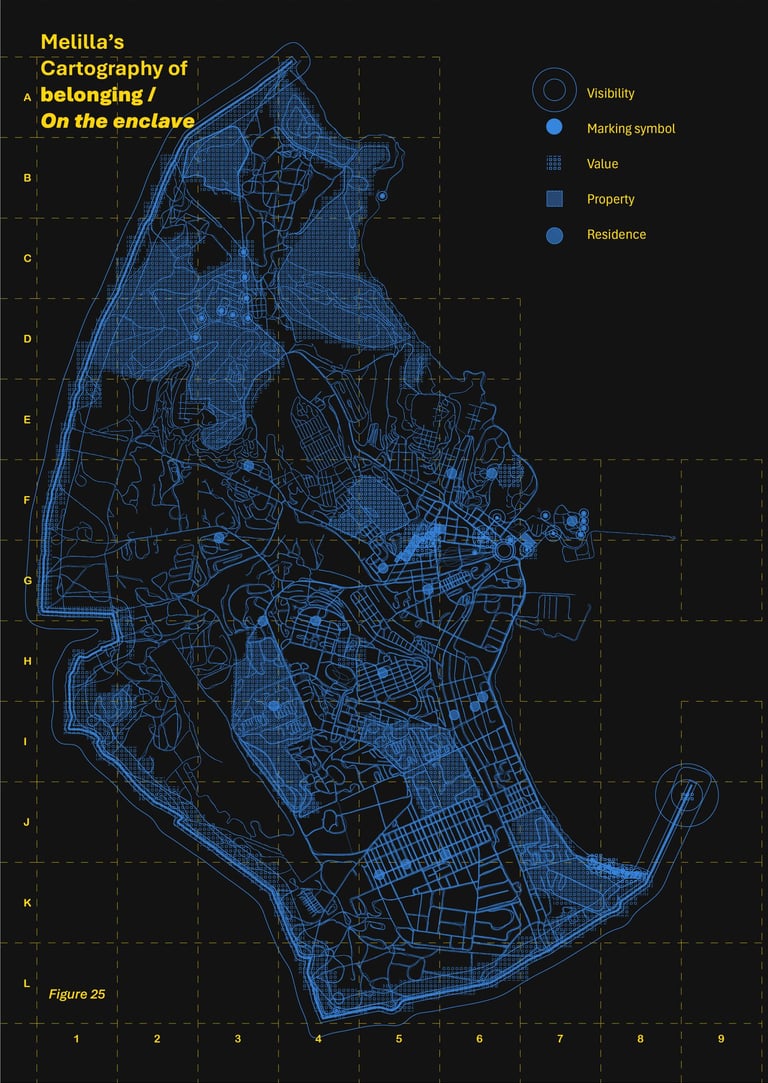

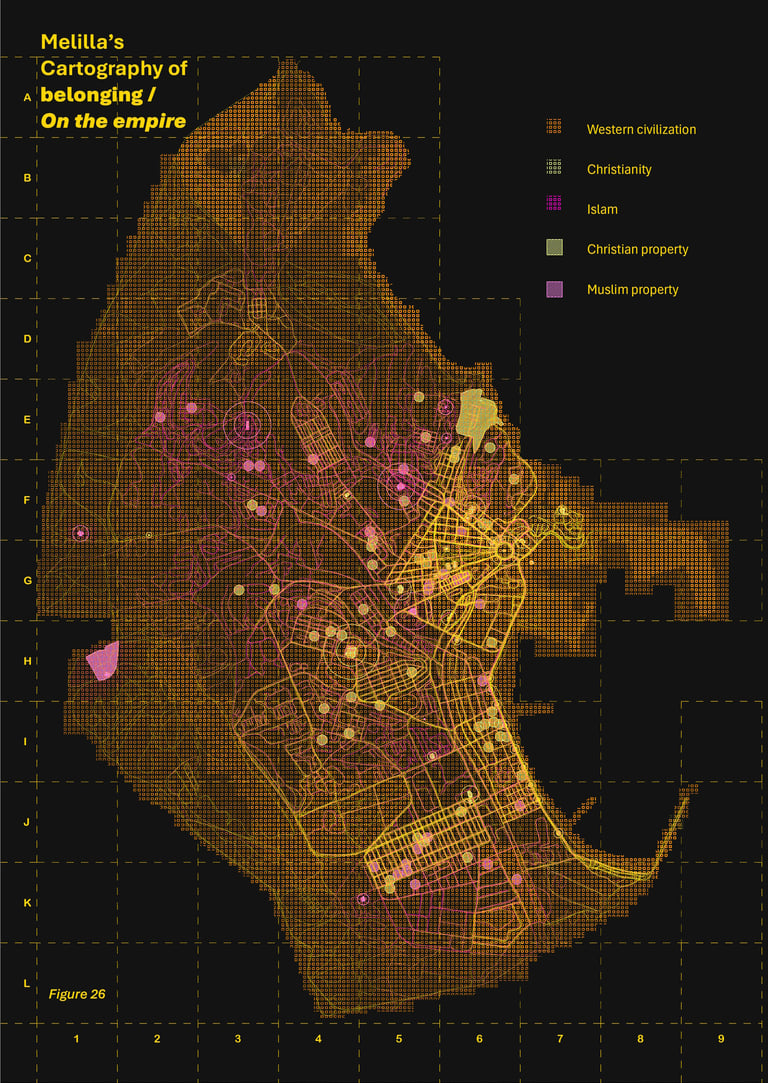

If you don't see the PDF,
please refresh the page.


CARTOGRAPHIES OF POWER
CARTOGRAPHIES OF VALUE
Exploring belonging and culture through the cartographies of power, value, and freedom according to Karen Horney's approach to human compulsions and neuroses.
Through the category of "Institutions of Belonging" I examine the different ways that culture operates as organized structures through the human vectors of going against others (power), towards others (value), and away from others (freedom).
How is the power of various institutions of belonging manifested spatially? According to Galbraith, this is achieved through a third source of power: property. While property can also denote the accumulation of capital, in the context of the spatialization of property, it refers specifically to the ownership or restricted use of space. Thus, we can argue that the exercise of power in space essentially involves 'marking territory.'
CARTOGRAPHIES OF FREEDOM
CARTOGRAPHIES OF BELONGING
The third tendency described by Horney is the one characterized for going away, the need to compulsively withdraw. It is characterized for a sense of resignation, avoiding the assertion of their value or their power, that seeks to escape through their own mind. Within this compulsion “it is not his life but a life which he observes, and in which he has no active part.”
For freedom, value and power exist in the realm of fantasy. In this context, freedom is a relational term. It is the result of compulsively running away from others, so it culminates in isolation, in human isolation.


Horney identifies individuals with a predominant need to move toward others as “those whose foremost striving is to be loved or approved of, and who go to any length to have this wish gratified.”
The compulsion to be loved or approved of leads to an accumulation of worthiness, or value, pursued for its own sake. Since it stems from a relational tendency—like power and freedom—value is inherently relational. It requires validation from others. Value attracts and, as a result, becomes subject to objectification.
How does value become spatialized, and how is it consumed? In the case of value, its spatialization is even more intuitive than that of power. I argue that value becomes spatialized through materialized symbols of attractiveness—by beautifying spaces, in other words, through ornamentation. Value seeks to incorporate ornament, and in doing so, it transforms into ornament itself.
The presence of value systems, power structures, and attempts to achieve freedom in the enclave of Melilla are read through urban semiotic analysis, utilizing and classifying the built environment into a set of signs that carry intentions of power assertion and the imposition of ‘propriety’ rules. The different systems that uphold their values and cultures in Melilla are termed “Institutions of Belonging.”


Because of the idiosyncrasy of the ‘multicultural’ aspect of the enclave, the starting point, therefore, is a culturalist approach to the city. These cultural formations are analyzed with the lenses of power and their respective ideological loyalties, manifesting as symbols of belonging through physical characteristics. In this manner, because of the nature of the contested sovereignty of the enclave, Melilla provides a rich symbolic urban landscape, encompassing different forms of identitarian assertions in space. These symbols are often operationalized as flags and territorial markers.
